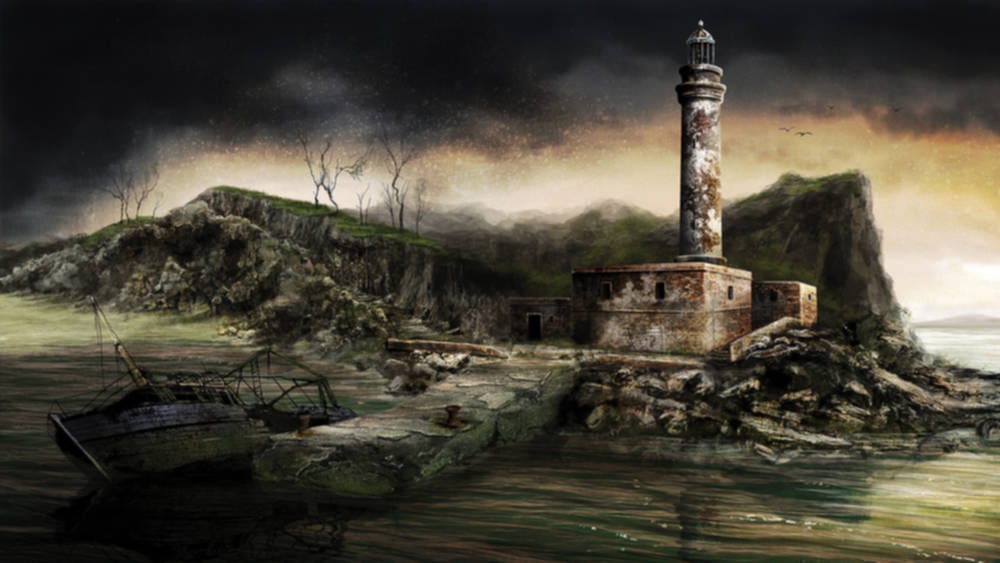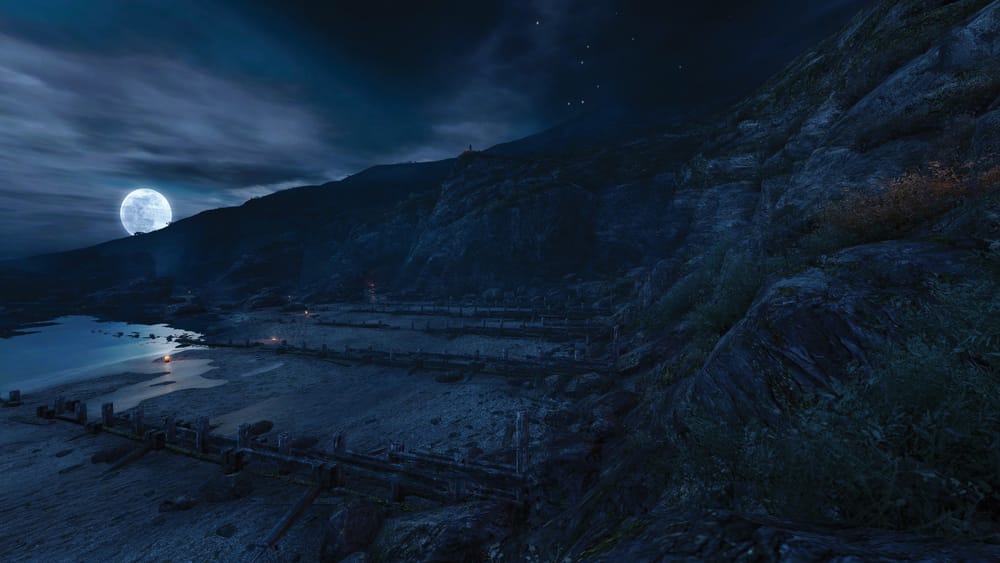Welcome to Esther island!
This week’s tour guide is Sanchit Sharma. Feel free to ask him any questions

"Dear Esther. The morning after I was washed ashore, salt in my ears, sand in my mouth and the waves always at my ankles, I felt as though everything had conspired to this one last shipwreck. I remembered nothing but water, stones in my belly and my shoes threatening to drag me underwater to where only the most listless of creatures swim.”
In Dear Esther, you control a disembodied camera and use it to explore an unnamed and uninhabited island in the Hebrides. A narrator reads out transcripts of letters to a woman named Esther, and sections of these monologues are read out when the camera reaches semi-random trigger points.
Why do I call it a camera, and not a character? I call it this because at no point does it interact with the environment. It cannot jump, it cannot kick pieces of the scenery which seem to be movable, it cannot so much as open a door. It is merely a way for the player to enter this world, as opposed to a way for the player to influence it.
However some people argue that it is actually a character, and to be fair certain points do make much more sense if the game is treated in this manner.
It should be noted that there is no button to jump in game. This can be somewhat annoying when it feels like the ability to jump would give you a little more freedom. If this could be added in such a way to still not increase the area to explore by too much, it would simultaneously be more satisfying for the player and not much more work for the developer.
“At night you can see the lights sometimes from a passing tanker or trawler. From up on the cliffs they are mundane, but down here they fade into ambiguity. For instance, I cannot readily tell if they belong above or below the waves. The distinction now seems banal; why not everything and all at once! There’s nothing better to do here than indulge in contradictions, whilst waiting for the fabric of life to unravel.”
Visually, the game is stunning. The island is mapped out in great detail, but due to the lack of mechanics or general crazy things going on as with most games, it will quite happily run at 1080p on a graphics card that wouldn’t normally be able to handle it. The range of environments and textures presented on such a small map puts some recently released major titles to shame. In addition to this, the soundtrack fits perfectly and complements both the visuals and the monologues very well. It is available to stream or buy from the official website, which is a very good idea on the part of the developers – the soundtrack would be worth the cost of a normal album. In order to immerse yourself in the game more, I’d recommend playing it with 3D vision not only on, but turned up at least halfway. It really accentuates the feelings created by the game (at least, up until the bridge of your nose starts hurting because nVidia didn’t think about people who wear glasses), although there are points where it is a good idea to turn it off. This is pretty much only if you go underwater, however, so it isn’t a big deal and does little to damage the immersion.

“Donnelly’s book had not been taken out from the library since 1974. I decided it would never be missed as I slipped it under my coat and avoided the librarian’s gaze on the way out. If the subject matter is obscure, the writer’s literary style is even more so, it is not the text of a stable or trustworthy reporter. Perhaps it is fitting that my only companion in these last days should be a stolen book written by a dying man.”
The story, of course, is the main part of Dear Esther. It is about an unnamed man talking to a woman named Esther, most likely his late wife. The letters and a few cutscenes heavily imply that Esther was killed in a car accident by a man mentioned later on in the game, Paul. The narrator often also mentions a cartographer named Donnelly, who charted the island in the past, originally coming to the island to find details of a hermit told to have lived here but being unsuccessful in his task and so moving on to write about the island instead.
Due to the fact that on any given playthrough many of the monologues will not be encountered, the story given to the player is incomplete and forces them to draw their own conclusions. There are many minor details that will give an insight into parts of the plot that are never mentioned, and it is down to the player to uncover the truth, though it is never confirmed what exactly that is.
“Donnelly reported the legend of the hermit; a holy man who sought solitude in its most pure form. Allegedly, he rowed here from the mainland in a boat without a bottom, so all the creatures of the sea could rise at night to converse with him. How disappointed he must have been with their chatter. Perhaps now, when all that haunts the ocean is the rubbish dumped from the tankers, he’d find more peace. They say he threw his arms wide in a valley on the south side and the cliff opened up to provide him shelter; they say he died of fever one hundred and sixteen years later. The shepherds left gifts for him at the mouth of the cave, but Donnelly records that they never claimed to have seen him. I have visited the cave and I have left my gifts, but like them, I appear to be an unworthy subject of his solitude.”
I would be less inclined to call this a game and moreinclined to call it a work of interactive art. If this is the kind of thing that you enjoy, Dear Esther would certainly be worth your money.
My only complaint aside from the jumping and water issues is that there is no log – being able to read or listen back over what you have previously heard would make the story far easier to get to grips with the first time around, and allow a player to understand and draw their own conclusions with only one playthrough, as opposed to the two or three it took me.
Other than that, this is a truly amazing piece. It is available on Steam for £6.99









